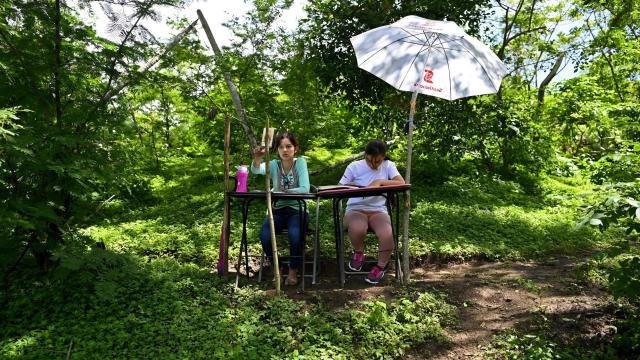Today is the World Wide Web’s 32nd birthday.
It can’t be overstated how much the world has come to rely on it since inventor Sir Tim Berners-Lee came up with the idea while working at the European Organisation for Nuclear Research (CERN) in 1989 — particularly in the last year. The web has completely changed the face of so many industries, particularly music, retail, publishing, travel, and transport. But education saw a massive shift over the last year as the covid-19 pandemic pushed teachers and students to online learning.
For households that already had reliable internet access that they could afford, students could keep up with their studies. But for communities lacking reliable and affordable internet access, the digital divide hit those students the hardest. ISPs and mobile carriers were quick to waive data caps and overage fees at the start of the pandemic to help students continue their students until the end of the school year, but not every telco was keen on continuing that support into 2021.
Sir Tim Berners-Lee and Web Foundation co-founder Rosemary Leith marked today’s anniversary by highlighting several young people around the world who have helped virtually connect their communities where big-name telcos and local governments have done little to help.
“A third of young people have no internet access at all. Many more lack the data, devices, and reliable connection they need to make the most of the web,” said Berners-Lee and Leith in their blog post today. “In fact, only the top third of under-25s have a home internet connection, according to UNICEF, leaving 2.2 billion young people without the stable access they need to learn online, which has helped so many others continue their education during the pandemic.”
That’s 2 in 3 children and young people who do not have the internet at home globally.
That same UNICEF report states only 33% of children and young people have internet access at home, globally. But the digital divide between high-income and low-income countries is massive. About 87% of children and young people aged 0-25 have internet access at home in high-income countries versus 6% of the same age group in low-income countries.
Berners-Lee and Leith also note that when young people are able to get online they are “confronted with abuse, misinformation, and other dangerous content,” which can discourage them from participating in online communities altogether — especially for young people who are targeted based on their race, religion, sexuality, abilities, and gender.
“How many brilliant young minds fall on the wrong side of the digital divide? How many voices of would-be leaders are being silenced by a toxic internet?” said Berners-Lee and Leith. For the nine individuals highlighted by the Web Foundation today, it seems almost miraculous that they have succeeded in helping their communities despite so many roadblocks.
For instance, Avi Schiffmann created ncov2019.live for tracking covid-19 cases around the world when he was still in high school, as well as 2020protests.com and whoto.vote for tracking BLM protests and the 2020 presidential election.
Hera Hussain launched Chayn eight years ago to help survivors of gender-based violence. To-date, Chayn has helped more than 380,000 people globally and currently has 400 volunteers in 15 countries.
Ian Mangenga founded and runs the non-profit Digital Girl Africa, which helps girls and women increase their digital literacy so they can have a much larger agency in the digital economy.
And that’s just a small taste of how young people around the world are using the internet for good.
“Delivering internet access to all young people is well within our reach. Through funding for network infrastructure, subsidies, and support for community networks, we can get the web into the hands of every young person on earth,” Berners-Lee and Leith wrote.
In the U.S., for instance, legislation was introduced into the House Thursday aimed at closing the digital divide once and for all. The Accessible, Affordable Internet for All Act would need around $US80 ($103) billion to deploy broadband infrastructure across the U.S., focusing on rural and urban communities who currently do not have reliable and affordable access to the internet. These communities would receive 100/100 Mbps internet, which is the new definition of high-speed broadband some lawmakers are asking the FCC to adopt.
The U.S.’s issue, in particular, is major ISPs having monopolies over certain areas, and sometimes entire cities. According to a recent study by the Institute for Local Self-Reliance, at least 83.3 million Americans can only access broadband through a single provider. Comcast and Charter alone have a monopoly over at least 47 million people. Other big ISPs have left much of rural America with old, unreliable DSL technology and have no financial incentive to serve small markets while they carve up territory like a street gang.
“By giving billions more people tools to learn, earn, and create, this down payment for future generations would deliver incredible returns in the form of economic growth and social empowerment,” said Berners-Lee and Leith.
